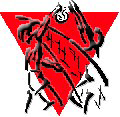FIVB Ball Handling Guidelines for Referees:
In accordance with the spirit of international (and USAV) competitions, and to encourage longer rallies and
spectacular actions, only the most obvious violations will be whistled. Therefore, when a player is not in a
very good position to play the ball, the first referee will be less severe in his/her judgment of ball handling
faults. For example:
- The setter running to play the ball or forced to make a very quick action to reach the ball in order
to set.
- The players are forced to run or make very quick actions to play a ball after it has rebounded from
the block or from another player.
- The first team contact may be freely made except if the player catches or throws the ball.
Guidelines for overhand passing ("setting") actions:
- When the setter is in good position to play the ball, excellent contact is expected (with respect to
the level of play).
- When the setter is running or jumping to get a better position to set the ball, the referee should be
less severe in judging contact. (A jump-set does not equate to an automatic "no call" situation.)
- If the setter, or other player, is not in good position because he/she has not made an appropriate
effort to do so, judgment should not be less severe.
Referees must also avoid making "automatic calls". For example:
- A ball recovered from the net -- the ball often rebounds slowly on these plays, but that does not
automatically result in a caught/thrown ball.
- Plays made from strange body positions.
- Skills attempted by lesser-skilled players.
Referees and participants should recognize that there is no body position or technique that cannot result in a
LEGAL contact of the ball.
|


